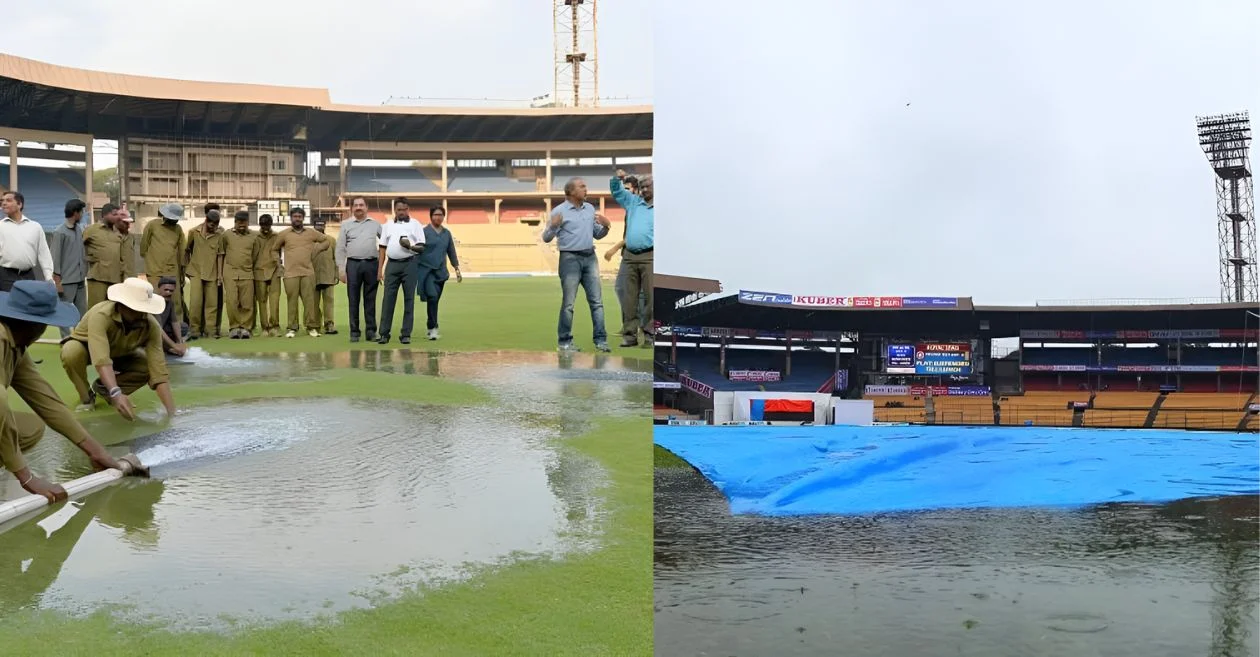India and New Zealand are gearing up for a three-match Test series, a key component of the World Test Championship (WTC). The first Test will be held at the iconic M. Chinnaswamy Stadium in Bengaluru, running from October 16 to October 20. Both teams come into the series with strong lineups, eager to solidify their standings in the WTC and make a mark on the international cricket stage.
This series is particularly significant as it presents a chance for both teams to showcase their skills and strategies, especially after their respective performances in previous series. With players from both sides looking to make an impact, fans can expect an exciting and competitive atmosphere throughout the matches.
Weather concerns: The rain factor during India vs New Zealand 1st Test
As thrilling as the prospect of this series is, there is a cloud looming over it – literally. The Bengaluru region has been experiencing substantial rainfall over the past few days, leading to concerns about wet conditions affecting gameplay. The weather forecast indicates that rain is likely to persist throughout the Test match, with heavy thunderstorms expected, which could disrupt play and potentially lead to significant delays. Such weather conditions not only affect the players’ performances but can also dampen the overall experience for spectators hoping for uninterrupted action. Given the unpredictable nature of monsoon weather in India, this adds a layer of complexity to an already intense series.
The SubAir facility at M. Chinnaswamy Stadium: A game-changer for cricket
To tackle the challenges posed by rain and ensure that matches can proceed with minimal interruptions, the M. Chinnaswamy Stadium is equipped with a state-of-the-art SubAir drainage system. This innovative technology is a game-changer for maintaining pitch and outfield conditions during wet weather. Here’s a detailed look at how the SubAir facility works:
Automatic Activation: The SubAir system is designed to spring into action the moment it detects rain. This proactive approach prevents water from pooling on the field, ensuring a quicker return to play.
Rapid Water Removal: The system is capable of draining up to 10,000 liters of water per minute. This rapid drainage capability means that even after heavy rainfall, the outfield can be ready for action in just a few minutes, significantly reducing downtime.
Digital Operations: The SubAir facility operates through a digital interface that allows for the real-time monitoring and management of field conditions. Different modes are employed to adapt to changing weather scenarios, providing not just drainage but also aeration of the soil.
Sand-Based Ground: The effectiveness of the SubAir system is enhanced by the stadium’s sand-based ground, which replaced the traditional red soil. Sand drains water much more efficiently than soil, preventing slipperiness and thereby reducing the risk of player injuries.
Also READ: IND vs NZ 2024, Test Series: Broadcast & Live Streaming Details – When and Where to watch in India, New Zealand, Pakistan, USA and other countries
History of the SubAir system at Chinnaswamy Stadium
The SubAir drainage system was installed at M. Chinnaswamy Stadium in Bengaluru as a response to the challenges posed by rain during cricket matches. The turning point came after a disastrous Test match between India and South Africa in 2015, where inclement weather limited play to just one day. This event highlighted the urgent need for an effective drainage solution to prevent similar occurrences in the future.
In the aftermath of this match, the Karnataka State Cricket Association (KSCA) took decisive action. Between June 2016 and January 2017, the association undertook a significant revamp of the stadium’s field. This renovation included the installation of the SubAir system, which incorporated advanced water-detecting smart sensors to enhance the management of the playing surface.
The SubAir system has since proven to be a game-changer for the stadium, significantly improving its ability to handle heavy rainfall. A notable instance showcasing its effectiveness occurred during an Indian Premier League (IPL) match on May 21, 2023, between Gujarat Titans and Royal Challengers Bangalore (RCB). Just before the match was set to start, the city experienced a heavy downpour. Thanks to the efficient operation of the SubAir system, the grounds staff was able to drain the water quickly, resulting in only a 30-minute delay before the match commenced. Remarkably, the game proceeded as a full 20-over contest, much to the delight of players and supporters alike.
Also READ: 3 reasons why India should include Sarfaraz Khan in their playing XI during New Zealand Tests
For latest cricket news & updates, visit CricketTimes.com.











